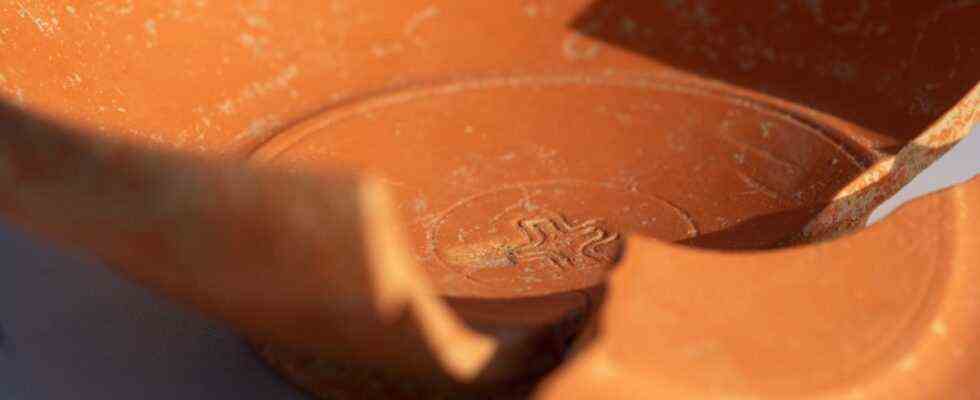Of course, Swabia is inherently a blessed country, but for archaeologists, this region must now feel like a kind of gold mine. Spectacular archaeological finds regularly come to light there. The remains of the primate “Udo” from the Allgäu, who already walked upright twelve million years ago, are remembered. An equestrian grave from the 7th century in the Augsburg district also caused a stir. In the meantime, the word spectacular is used almost inflationarily in the preservation of historical monuments, there is hardly a larger find that is not given this attribute.
For the latest finds from the Nördlinger Ries, the classification as spectacular is nevertheless appropriate. Graves from the 6th century have now been unearthed in a new development in the village of Deiningen, and these contained objects that definitely make one sit up and take notice. An ivory comb found in a knight’s grave and a bowl that was made in what was then Tunisia are very unusual. Such finds are so far unique north of the Alps, says archaeologist Johann Tolksdorf from the State Office for the Preservation of Monuments.
Tolksdorf uses a meaningful comparison in order to be able to classify the dimensions of the find. In the past few decades, he says, more paintings by great masters have surely been discovered in some storage space than an ivory work of art like that comb. It is clearly an art object that has only very rarely been preserved in this form. On the one hand, because grave goods were no longer common in Italy at that time, and on the other hand, because the ivory was often reworked.
The grave in which a couple was found holding hands is around 1500 years old.
(Photo: Archaeological Office Dr. Woidich GmbH / dpa)
There is also a find that should be entirely to the taste of the boulevard. It is a grave in which two skeletons lay side by side, like lovers. The man’s hand had been placed over the woman’s hand in a familiar manner. The couple were relatively young by today’s standards, but with a life expectancy of 30 years at the time, they probably did not die too early.
How the comb and the African ceramic bowl ended up in the Nördlinger Ries, which was then settled by the Alemanni, can only be answered speculatively. Tonsdorf says that the bowl was certainly not for sale in stores, but got into the Ries through political contacts or as booty from a war campaign. Even historians whose specialty is the early Middle Ages do not commit themselves to the current state of affairs. One can only assume that the Nördlinger Ries was under Franconian rule after the second victory of Clovis over the Alemanni in 506, says the medieval expert Irmtraut Heitmeier. From a scientific point of view, what this means for the finds is still an uncultivated area.
The comb made of ivory is decorated with animal scenes on both sides. It was found in a kind of early medieval toiletry bag.
(Photo: Bavarian State Office for Monument Preservation / dpa)
What is certain is that ivory carvings that are 1500 years old, such as those found in the Ries, are extremely rare. Perhaps it is surprising that the comb was found in a man’s grave, of all things; personal hygiene items are more likely to be located in women’s graves. Nevertheless, combs were also placed in the grave of dead men at that time, which in this case suggests that the man probably had long hair and a beard, which he tended with a blade and a comb. In any case, it is unusual that the comb is made of ivory. Animals that are obviously fleeing from other animals are scratched on the front and back.
As a rule, such archaeological finds help shed light on the darkness of early history. They enable answers to questions that have remained open until now due to a lack of written sources, such as how society and culture developed at that time. The equestrian grave in Nordendorf already contained Coptic crockery, which was hardly widespread north of the Alps and was probably made in Egypt. Like the finds from Deiningen, this indicates a population that was connected to long-distance trade routes, cultivated extensive relationships and acquired prestige objects in various ways.
Certainly similar finds will appear in the future, which is due to the fact that roads, lines and settlements are constantly being built and the earth is being torn up. Too often relics slumbering in the ground are destroyed in the process. And then there is also the threat of the plague of predatory graves, who like hyenas attack possible sites. Viewed in this way, it is even regrettable that many finds have to be presented as a sensation because they cannot remain in the ground, which would often be the best thing. The archaeologists at least get the advantage that they can show something. Historians are less likely to be heard because they have no written sources from that time.

